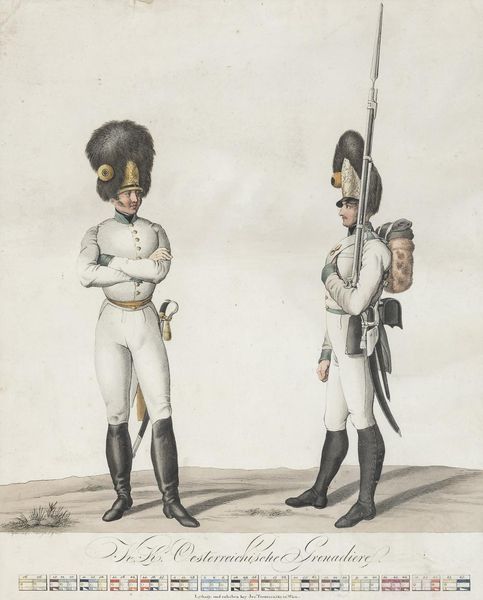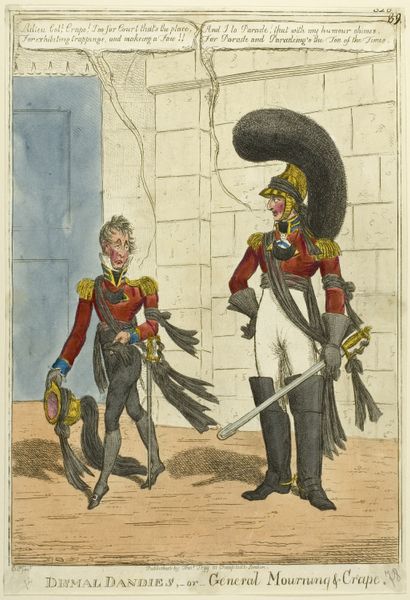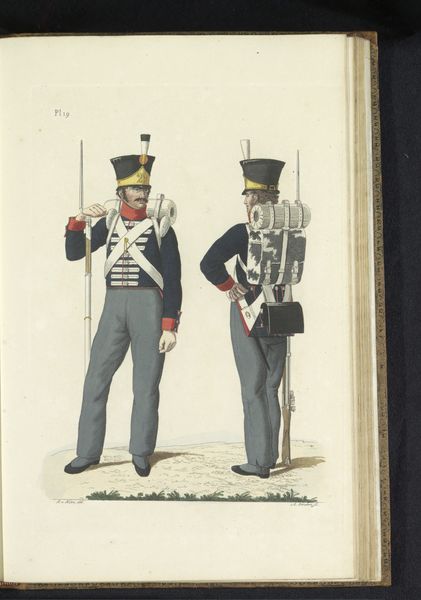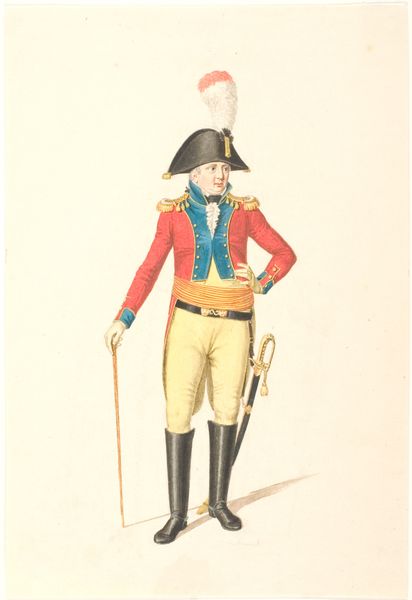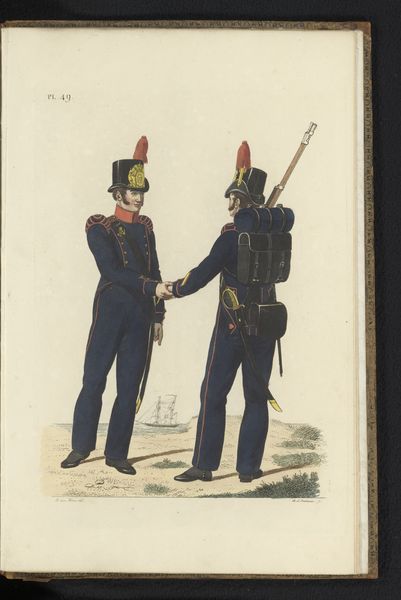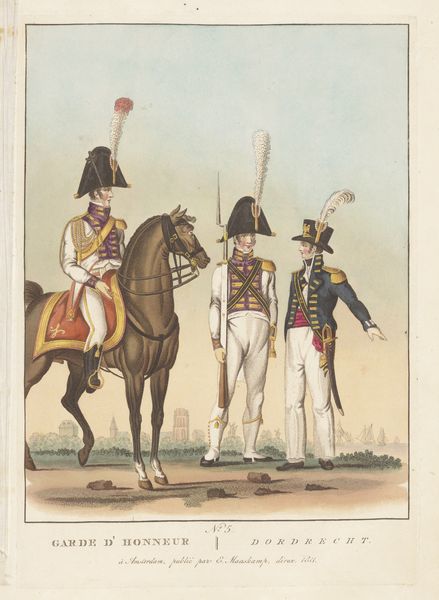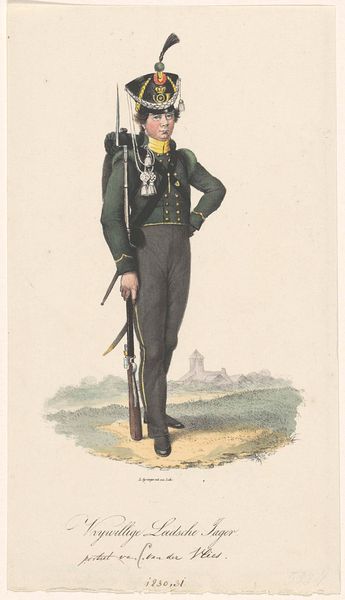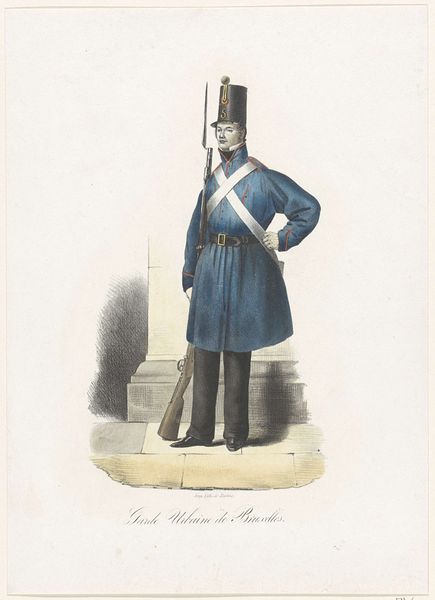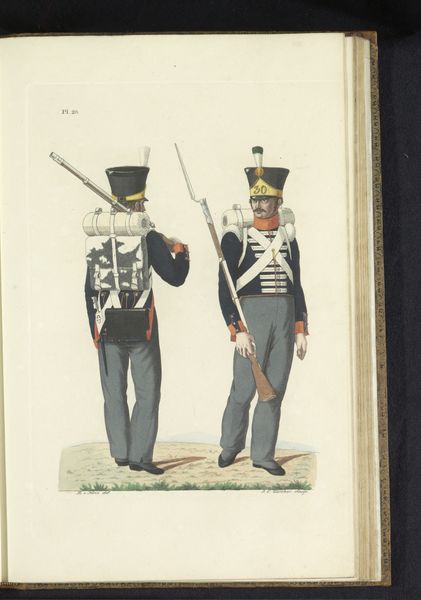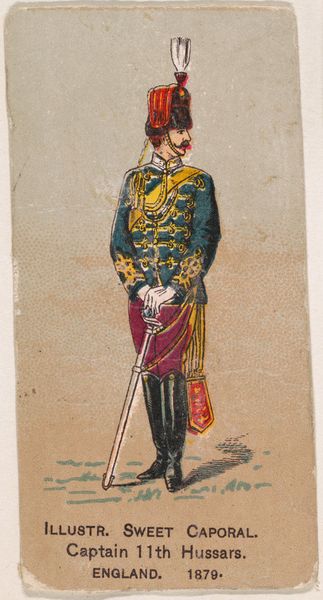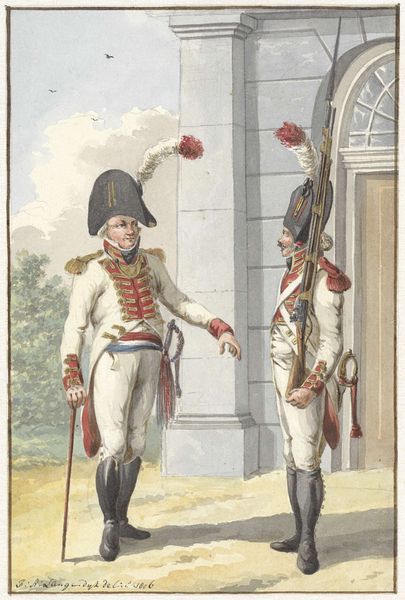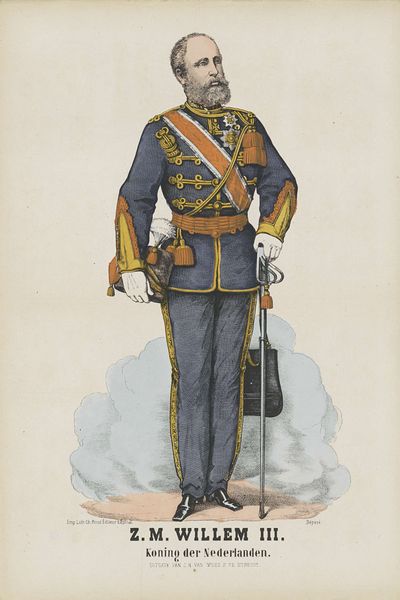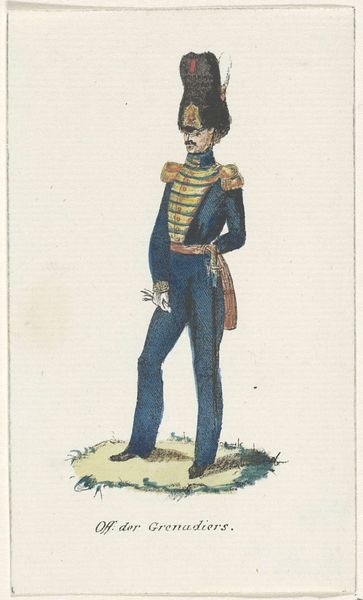
drawing, lithograph, print
#
portrait
#
drawing
#
lithograph
# print
#
traditional media
#
romanticism
#
genre-painting
#
history-painting
#
realism
Dimensions: height 295 mm, width 205 mm
Copyright: Rijks Museum: Open Domain
Curator: The lithograph before us, titled "Twee infanteriesoldaten," or "Two Infantry Soldiers," dates back to 1833 and is attributed to Johan Martin Leydenroth. It offers a fascinating glimpse into the military dress of the period. Editor: It strikes me as quite formal, almost stiff. The attention to detail in the uniforms is meticulous, but it feels as though we’re looking at fashion plates rather than breathing figures. Curator: Precisely! Leydenroth captures every button and braid. Notice how the bright yellows and blues of the one soldier’s tunic contrast so sharply with the muted grays of the other. Semiotically, one could read the brighter colours as an effort of distinction and rank, compared with the subtle grey meant for more rigorous activity. Editor: I'm intrigued by the socio-political context. This lithograph would have been relatively easy to produce and disseminate widely. Could it have functioned as a kind of recruitment tool, romanticizing military life? Perhaps bolstering national pride at a time of evolving political landscapes in Europe? Curator: Undoubtedly. Prints like these played a vital role in shaping public perception. And let’s not overlook the formal precision of the composition itself. The arrangement—one soldier facing forward, the other in profile—creates a balanced, almost symmetrical design, which serves to reinforce this sense of rigid order. Observe, for example, how each stands erect and nearly expressionless. It suggests, at least in the visual economy of the piece, self-sacrifice and strength. Editor: The oversized hats are fascinating; their height must have added to the soldiers’ perceived stature, even as they would impede vision. I also wonder about the practicalities of that enormous backpack—surely, it restricted movement and balance. All this speaks to a world where image and appearance were given precedence over practicality. Curator: A valid point. Perhaps the emphasis lies less on functional combat attire and more on projecting power and instilling order through visual symbolism. This is also true of Leydenroth’s careful lithographic line, rendering depth with shadows while producing two highly geometric, even monumental figures. Editor: So, we move beyond mere representation of soldiers into something more – propaganda, self-fashioning, the projection of an ideal. It transforms what could be a genre painting into a telling piece of historical commentary. Curator: Indeed, and with a rather unique compositional balance. Editor: Definitely a work with interesting cultural nuances and compositional organization.
Comments
No comments
Be the first to comment and join the conversation on the ultimate creative platform.
